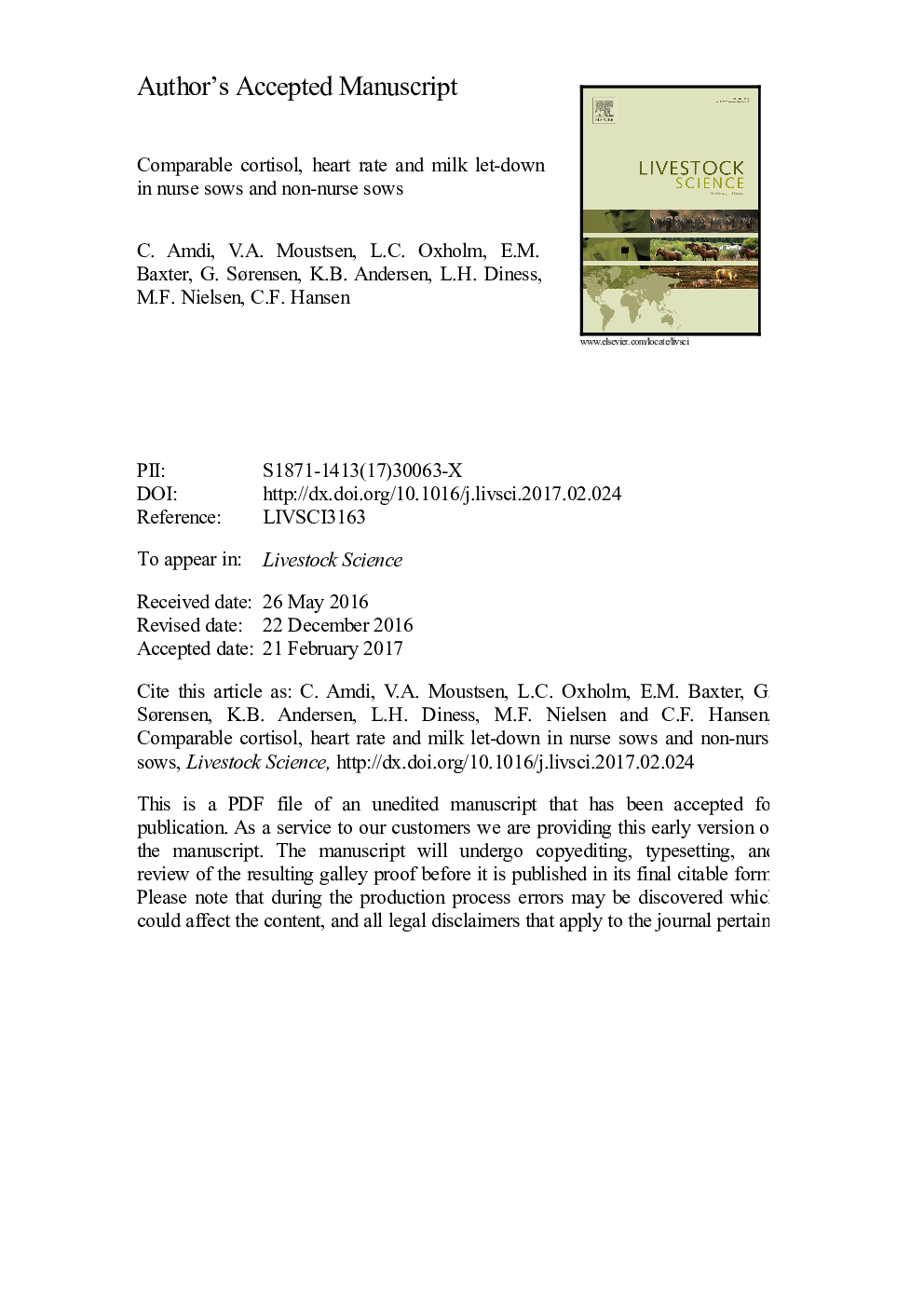| Article ID | Journal | Published Year | Pages | File Type |
|---|---|---|---|---|
| 5543140 | Livestock Science | 2017 | 29 Pages |
Abstract
Increasing litter size in hyperprolific sows has led to the need for management systems for surplus piglets, one of which is the use of nurse sows. The aim of this study was to investigate physiological changes in salivary cortisol, heart rate and number of milk let-downs in nurse sows compared to non-nurse sows. Sows were divided into three treatments: 1) control (non-nurse) sows nursed their own piglets until weaning at 26 days of age; 2) nurse1 sows had their own piglets removed and replaced with newborn piglets (between 6â24Â h old) at Day 7, these were weaned at Day 33 of the sow's lactation period and 3) nurse2 sows weaned their own piglets at Day 21 and received a litter of 7Â day old piglets from a nurse1 sow. These new piglets were weaned at Day 40 of the nurse2 sow's lactation period. Saliva samples were collected for cortisol analyses and the sows were fitted with pulse belts to monitor heart rate. Cameras were placed above the pens to record milk let-downs. Overall, there was no influence of treatment on salivary cortisol, heart rate or the number of milk let-downs/h. There was an effect of time as cortisol levels fell throughout lactation (P<0.001), and heart rate increased (P<0.001). Nurse1 sows had a lower cortisol concentration on Day 31 compared to Day 24 (P<0.028). The same was found for nurse2 sows, where the salivary cortisol concentration on Day 31 and Day 38 was significantly lower than on Day 24 (P<0.001). The present study found no differences in short-term (when the sows received new piglets) or long-term (throughout the lactation period) cortisol and heart rate measurements between different treatments. In addition, the frequency of milk let-down/h was the same for nurse sows as for non-nurse sows.
Keywords
Related Topics
Life Sciences
Agricultural and Biological Sciences
Animal Science and Zoology
Authors
C. Amdi, V.A. Moustsen, L.C. Oxholm, E.M. Baxter, G. Sørensen, K.B. Eriksson, L.H. Diness, M.F. Nielsen, C.F. Hansen,
